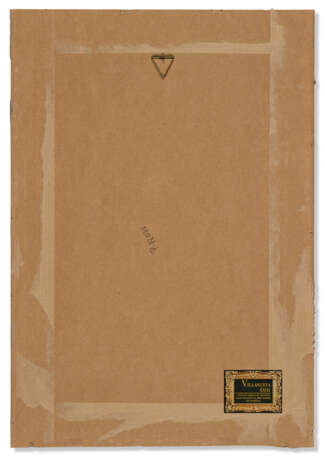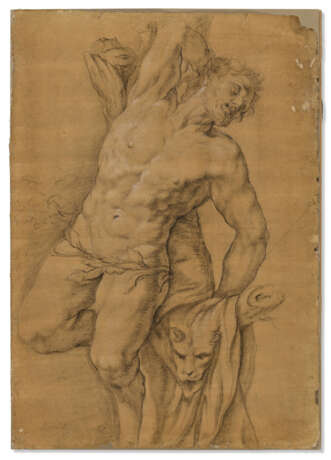ID 922075
Lot 26 | ÉCOLE ITALIENNE DU XVIIIE SIÈCLE, D'APRÈS PIERRE LEGROS II
Estimate value
€ 5 000 – 7 000
Marsyas s’efforçant de briser ses liens
pierre noire, craie blanche, estompe, sur papier brun, filigrane étoile à huit branches surmontée des initiales ‘CS’
44 x 30,8 cm (17 3/4 x 12 1/8 in.)
Post lot text
ITALIAN SCHOOL, 18TH CENTURY, AFTER PIERRE LEGROS II, MARSYAS, BLACK AND WHITE CHALK, STUMPING ON BROWN PAPER
The present sheet records a sculpture of Marsyas tied to a tree by Pierre Legros II, active in early 18th Century Rome. Various replicas in bronze, marble and terracotta of Legros’ Marsyas were available in England, France and Italy. None of the copies is signed and the attribution to Legros is based on the description of the bronze in the Staatliche Kunstsammlungen Dresden (inv. H4 154/017) ), together with the Apollo that forms a pendant to it, as ‘von Legros’ in an inventory from 1715. In his article on Legros’ Marsyas, Malcom Baker suggests the original conception dates to 1715, during a visit by Legros to France from Italy ( ‘The “most rare Master Monsii Le Gros” and his “Marsyas”’, The Burlington Magazine, CXXVII, no. 991, October 1985, pp. 702-706).
| Applied technique: | Chalk |
|---|---|
| Medium: | Acrylic glass, Paper, Plastic, Stone |
| Art style: | Old Masters |
| Genre: | Mythological painting |
| Place of origin: | Italy, Europe |
| Auction house category: | All other types of objects, Drawings |
| Applied technique: | Chalk |
|---|---|
| Medium: | Acrylic glass, Paper, Plastic, Stone |
| Art style: | Old Masters |
| Genre: | Mythological painting |
| Place of origin: | Italy, Europe |
| Auction house category: | All other types of objects, Drawings |
| Address of auction |
CHRISTIE'S 9 Avenue Matignon 75008 Paris France | ||||||||||||||
|---|---|---|---|---|---|---|---|---|---|---|---|---|---|---|---|
| Preview |
| ||||||||||||||
| Phone | +33 (0)1 40 76 85 85 | ||||||||||||||
| Fax | +33 (0)1 40 76 85 86 | ||||||||||||||
| Conditions of purchase | Conditions of purchase | ||||||||||||||
| Shipping |
Postal service Courier service pickup by yourself | ||||||||||||||
| Payment methods |
Wire Transfer | ||||||||||||||
| Business hours | Business hours
|





